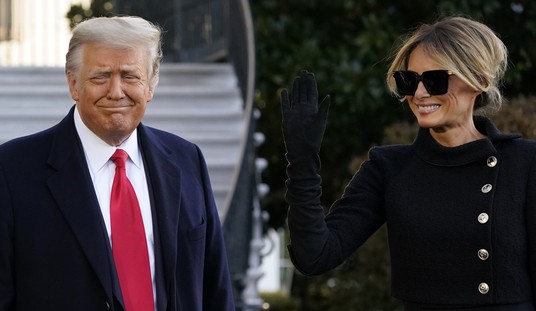=========
=========
Promoted from the diaries by streiff. Promotion does not imply endorsement.
=========
=========
I will admit it: I fouled up! I had planned a post for June 23rd, to celebrate there being only ten more years until the end of Affirmative Action, the time period approved by the Supreme Court in Grutter v Bolinger, 539 U.S. 306 (2003), but I got involved with other things, and missed the date. Justice Sandra O’Connor delivered the Opinion of the Court:
The requirement that all race-conscious admissions programs have a termination point “assure[s] all citizens that the deviation from the norm of equal treatment of all racial and ethnic groups is a temporary matter, a measure taken in the service of the goal of equality itself.” . . .
In the context of higher education, the durational requirement can be met by sunset provisions in race conscious admissions policies and periodic reviews to determine whether racial preferences are still necessary to achieve student body diversity. Universities in California, Florida, and Washington State, where racial preferences in admissions are prohibited by state law, are currently engaged in experimenting with a wide variety of alternative approaches. Universities in other States can and should draw on the most promising aspects of these race neutral alternatives as they develop. ([T]he States may perform their role as laboratories for experimentation to devise various solutions where the best solution is far from clear). The requirement that all race-conscious admissions programs have a termination point assure[s] all citizens that the deviation from the norm of equal treatment of all racial and ethnic groups is a temporary matter, a measure taken in the service of the goal of equality itself.” (“It would be a sad day indeed, were America to become a quota-ridden society, with each identifiable minority assigned proportional representation in every desirable walk of life. But that is not the rationale for programs of preferential treatment; the acid test of their justification will be their efficacy in eliminating the need for any racial or ethnic preferences at all”).
We take the Law School at its word that it would “like nothing better than to find a race-neutral admissions formula” and will terminate its race-conscious admissions program as soon as practicable. It has been 25 years since Justice Powell first approved the use of race to further an interest in student body diversity in the context of public higher education. Since that time, the number of minority applicants with high grades and test scores has indeed increased. We expect that 25 years from now, the use of racial preferences will no longer be necessary to further the interest approved today.
In summary, the Equal Protection Clause does not prohibit the Law Schoolís narrowly tailored use of race in admissions decisions to further a compelling interest in obtaining the educational benefits that flow from a diverse student body. Consequently, petitioner’s statutory claims based on Title VI and 42 U. S. C. §1981 also fail. (“Title VI . . . proscribe[s] only those racial classifications that would violate the Equal Protection Clause or the Fifth Amendment”) (the prohibition against discrimination in §1981 is co-extensive with the Equal Protection Clause). The judgment of the Court of Appeals for the Sixth Circuit, accordingly, is affirmed.¹
Grutter was announced on June 23, 2003, which puts that 25 year time frame expiring on June 23, 2028. Justice O’Connor admitted that race-conscious admissions programs were a “deviation from the norm of equal treatment,” undertaken to “further a compelling interest in obtaining the educational benefits that flow from a diverse student body,” and such programs had to have a termination point. While I fail to see how a “compelling interest” can ever override a specific provision of the Constitution, it was at least a partial victory for constitutional government that the Court said that there would have to be an eventual end.
So now we come to today’s news. From The New York Times:
Trump Administration Reverses Obama on Affirmative Action
By Erica L. Green, Matt Apuzzo and Katie Benner | July 3, 2018
WASHINGTON — The Trump administration will encourage the nation’s school superintendents and college presidents to adopt race-blind admissions standards, abandoning an Obama administration policy that called on universities to consider race as a factor in diversifying their campuses, Trump administration officials said.
Last November, Attorney General Jeff Sessions asked the Justice Department to re-evaluate past policies that he believed pushed the department to act beyond what the law, the Constitution and the Supreme Court had required, Devin M. O’Malley, a Justice Department spokesman said. As part of that process, the Justice Department rescinded seven policy guidances from the Education Department’s civil rights division on Tuesday.
“The executive branch cannot circumvent Congress or the courts by creating guidance that goes beyond the law and — in some instances — stays on the books for decades,” Mr. O’Malley said.
The Supreme Court has steadily narrowed the ways that schools can consider race when trying to diversify their student bodies. But it has not banned the practice.
Now, affirmative action is at a crossroads. The Trump administration is moving against any use of race as a measurement of diversity in education. And the retirement of Justice Anthony M. Kennedy at the end of this month will leave the court without its swing vote on affirmative action and allow President Trump to nominate a justice opposed to a policy that for decades has tried to integrate elite educational institutions.
A highly anticipated case is pitting Harvard against Asian-American students who say one of the nation’s most prestigious institutions has systematically excluded some Asian-American applicants to maintain slots for students of other races. That case is clearly aimed at the Supreme Court.
“The whole issue of using race in education is being looked at with a new eye in light of the fact that it’s not just white students being discriminated against, but Asians and others as well,” said Roger Clegg, president and general counsel of the conservative Center for Equal Opportunity. “As the demographics of the country change, it becomes more and more problematic.”
There’s much more at the original, but it appears to this writer that, by attempting to push universities to race-neutral admissions criteria, the Trump Administration is striving to reapply the provisions of the Fourteenth Amendment, to redress what even the Court called a “deviation from the norm of equal treatment.”
The Obama administration believed that students benefit from being surrounded by diverse classmates, so in 2011, the administration offered schools a potential road map to establishing affirmative action policies that could withstand legal scrutiny. The guidance was controversial at the time that it was issued, for its far-reaching interpretation of the law. Justice officials said that pages of hypothetical scenarios offered in the guidance were particularly problematic, as they clearly bent the law to specific policy preferences.
In a pair of policy guidance documents, the Obama Education and Justice departments told elementary and secondary schools and college campuses to use “the compelling interests” established by the court to achieve diversity. They concluded that the Supreme Court “has made clear such steps can include taking account of the race of individual students in a narrowly tailored manner.”
If “compelling interests” can override explicit constitutional provisions, as the Supreme Court did as far as Affirmative Action is concerned in Regents of the University of California v. Bakke, 438 U.S. 265 (1978), Grutter and Fisher v. University of Texas at Austin, 579 U.S. ____ (2016), of what use is the Bill of Rights, of the Constitution? It doesn’t take much imagination to argue, as some are already doing, that there is a compelling state interest in protecting the easily offended from having their feelings hurt hostile public environments, and that such outweighs the individual’s freedom of speech. As a survey of college students discovered, when asked “Does the First Amendment protect hate speech?” 44% said that no, it doesn’t, and another 16% indicated that they didn’t know.
It hardly requires references to point out that many on the left believe that it is a compelling state interest — even if they don’t know how to formulate the legal words — to restrict or even eliminate the right of the individual to keep and bear arms.
In the meantime, it is President Trump and his Administration, the people who so many on the left believe to be “literally Hitler,” who are standing up for individual rights, who are putting in place changes in policy which respect the United States Constitution, the way the Constitution is written.
No wonder the left hate him so!
__________________________________
Cross-posted on The First Street Journal.
__________________________________
¹ – Grutter v Bollinger, 539 U.S. 306 (2003), Opinion of the Court, Pages 31-32. Internal references omitted.














Join the conversation as a VIP Member